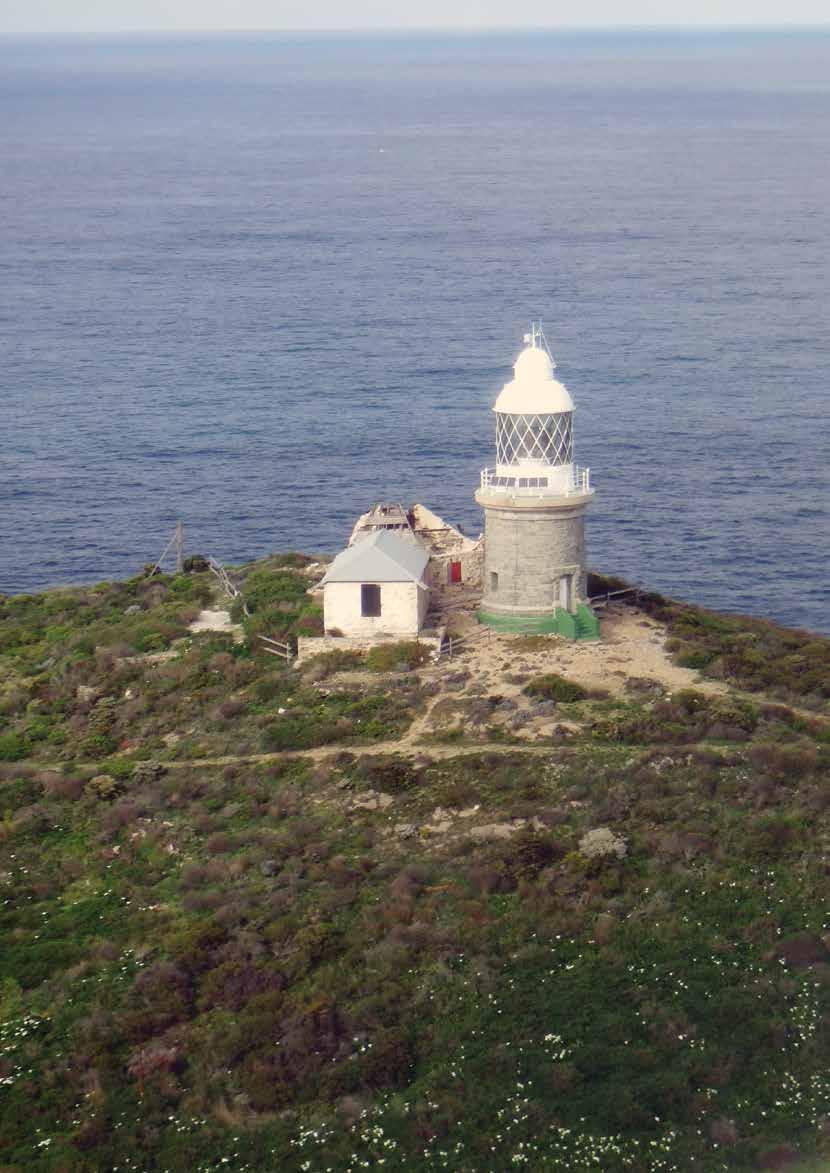
1 minute read
Breaksea Island Lighthouse
By Peter Strachan
Breaksea Island Lighthouse, at the entrance to King George Sound, Albany, was built by convict labour in 1857, making it one of the earliest to come into service in Western Australia the following year.
Advertisement
The current structure stands on the site of the original lighthouse, selected by Royal Engineer Captain Henry Wray, at the centre and highest point on the island.
The original lighthouse cost £637 ($1274) and consisted of a cast iron tower of prefabricated panels, built on a hexagonal sandstone and brick building with a corrugated iron roof. Construction materials for the lighthouse and its 13-metre tower were brought from England.
The light, 383 feet above sea level, had an expected loom of 23 nautical miles and with a second order catadioptric unit equipped with oil burners, it was recorded as visible for 30 miles.

Breaksea Island Lighthouse
But concerns were soon raised about the inefficiency of the light and the incompetence of its keepers. And when supplies of polish ran out and an inferior product was used on the reflectors, they were permanently damaged, reducing the light’s effectiveness. There were also safety issues.
At the time, Breaksea was an important signal station, both for navigational safety and for getting messages through to the mainland related to maritime traffic. Initially, signals were conveyed by flags, balls and cones on a mast until replaced by semaphore messages in 1869 and a connecting cable to the telegraph office in Albany in 1896.
Constant complaints about the light’s inefficiency resulted in a decision to build the present lighthouse in 1901, complete with a separate keepers’ cottage and new jetty. The tower was 24 foot tall (7.3 metres), built from local granite and brick at a cost in excess of 7000 pounds ($14,000).
Its first order light, a 13,000- candlepower lantern with a six-wick burner came into service in 1902. It was initially powered by colza oil and kerosene, but when it was automated in 1926 it was converted to acetylene gas. It is now solar powered and continues to provide a valuable service to mariners.
Information for this report has been provided by Sue Lefroy, of the Albany History Collection.










